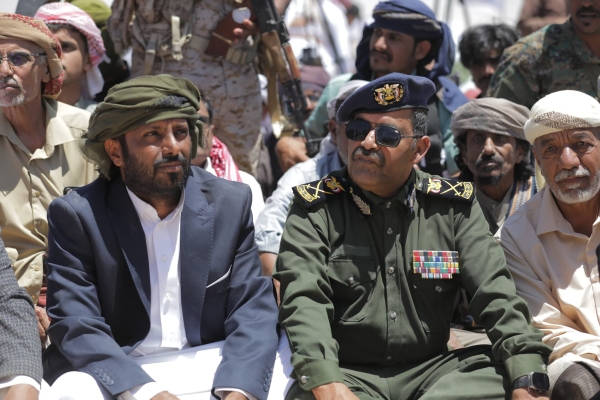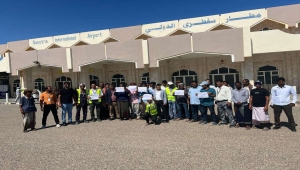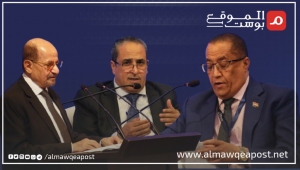
[ Amr bin Habrish ]
The province of Hadhramaut, which contains the largest city in Yemen located in the eastern part of the country, is once again returning to the forefront, amid a struggle between various currents seeking influence and dominance. This coincides with an ongoing U.S.-led military campaign on the other side of Yemen, ...and mounting stagnation within the Yemeni government and the Presidential Leadership Council.
Events in this province date back to the early stages of the ongoing war in Yemen since 2015, ...but it has recently become the scene of renewed internal conflict, as competing groups seek control of the oil-rich province bordering Saudi Arabia — the state now taking the lead on the Yemeni stage.
Saudi Arabia commands attention and holds greater influence in Hadhramaut than any other foreign state. This has kept the province away from the separatist Southern Transitional Council (STC), which has sought to control the province and previously declared it the capital of its so-called state. However, that effort did not pave the way sufficiently.
In response to these attempts by the STC, internal currents emerged within Hadhramaut demanding self-governance. President of the Presidential Leadership Council Rashad Al-Alimi visited Hadhramaut last year and announced that the city would enjoy self-rule and a share of the province’s rich oil resources.
But that was not enough to stop the protest demands. An opposition movement formed from local tribes, most notably the Hadhramaut Tribal Alliance, which raised the demands of the province’s residents and turned into a public front involving several tribes, military figures, and civilian leaders. Its demands evolved, and its protests expanded, transforming into a military force and a framework that brought together many tribal leaders.
In March, the situation escalated further with the visit of Presidential Council member and STC President Aidarous Al-Zubaidi to Hadhramaut. During the visit, he hinted at punishing anyone who obstructed his council, which acted as a spark that ignited tensions in the province and brought it into the sphere of regional intervention.
In response to Al-Zubaidi’s threats, Saudi Arabia swiftly summoned the leader of the Hadhramaut Tribal Alliance, Amr bin Habrish, to Riyadh. He appeared alongside Saudi Deputy Minister of Defense Prince Khalid bin Salman, who is responsible for the Yemen file — reflecting the level of Saudi interest in Hadhramaut, as well as signaling anger at the STC, which is funded by the United Arab Emirates.
Bin Habrish returned to announce the largest tribal gathering in Hadhramaut, attended by thousands of tribal and civilian figures. He presented a set of demands, some of which included the option of self-governance for the province and outlined a vision for Hadhramaut’s future — ranging from full autonomy to inclusion in a federal system that preserves the province’s status.
This reflects the extent of the blow dealt to the Southern Transitional Council and the failure of its efforts to include Hadhramaut in its so-called state. It also underscores the size of Saudi influence in shaping the situation in the province, at a time when the eight-member Presidential Leadership Council is suffering from division and a clear lack of influence and effectiveness.
In response to the Hadhramaut Tribal Alliance’s move, the STC rushed to reaffirm its presence by announcing a mass event on April 5th, in reaction to the tribal gathering that diverges from the council’s agenda and orientations.
But the developments in the province did not stop there. A new current emerged called the Change and Liberation Movement. It held a formal launch ceremony of its structure on April 14th and presented itself as a political and rights-based entity that includes personalities and tribal sheikhs from the southern and wider Yemeni provinces. The movement aims to actively contribute to restoring the Yemeni state on the basis of competence, justice, and equal citizenship.
The emergence of this movement came as a surprise. It was launched in the city of Al-Abr near the Saudi border and included tribal figures from several Yemeni provinces, particularly those known as the liberated provinces affiliated with the internationally recognized Yemeni government.
The movement announced the formation of its leadership, with a figure named Riyadh Al-Nahdi as head of the movement, another figure named Mohammed Ali Al-Saadi as Secretary-General, and a tribal sheikh named Ali bin Haftan Al-Say’ari — Sheikh of the Kinda tribes — as a member of the administrative body.
The movement introduced itself as a force seeking to liberate all of Yemen and represent all Yemenis. Tribal dynamics contributed to the success of its launch, which took place without any comment from the Yemeni government or the Kingdom of Saudi Arabia
.
However, the movement sparked controversy from its first day, due to reports of a past connection between its leader Riyadh Al-Nahdi and Al-Qaeda, his ties to Syrian President Ahmed Al-Sharaa, their joint involvement in fighting in Iraq, and allegations of Turkish backing of the movement. No comment has been issued by Turkish authorities regarding these claims.
The future of Hadhramaut appears to be full of surprises, especially as it receives Saudi attention, U.S. focus, and competition from the United Arab Emirates — making developments in the province highly complex, with much anticipation for what events may unfold next.

